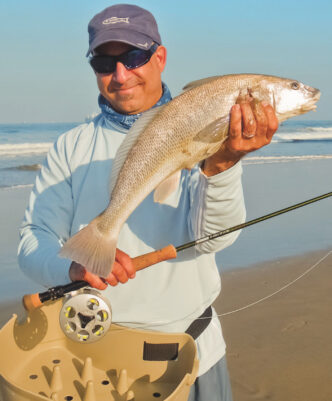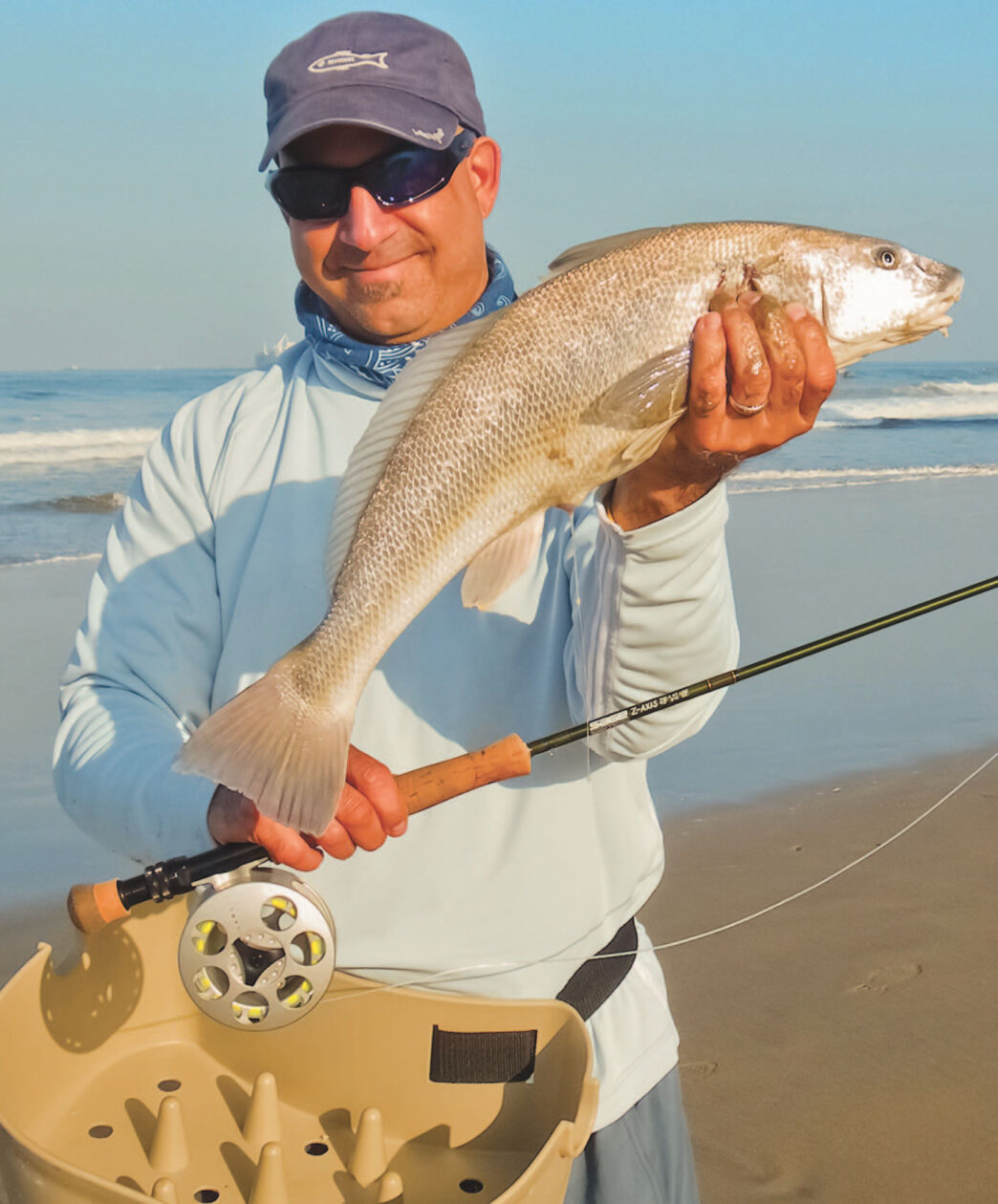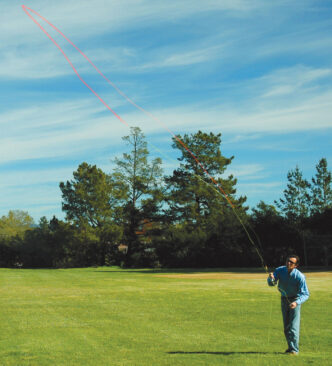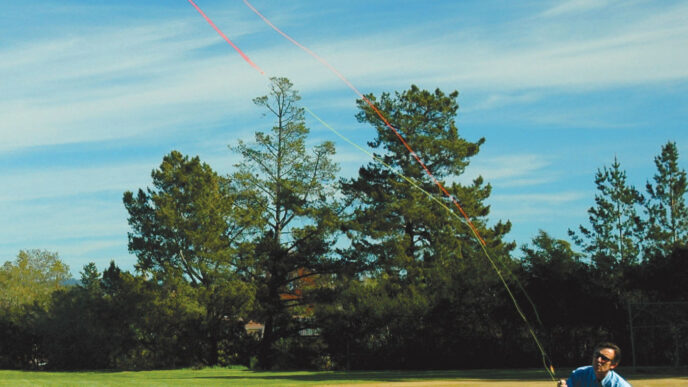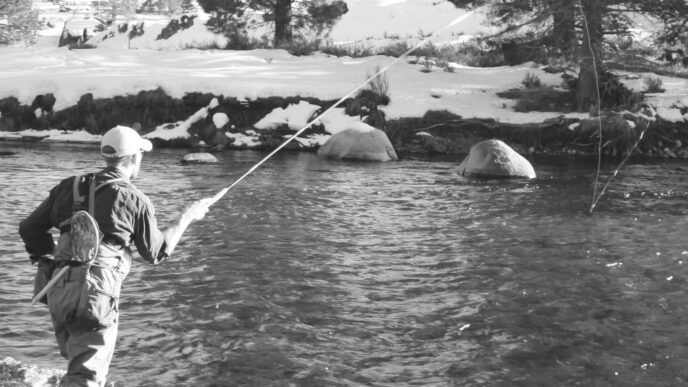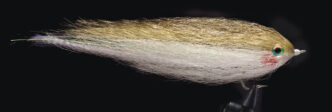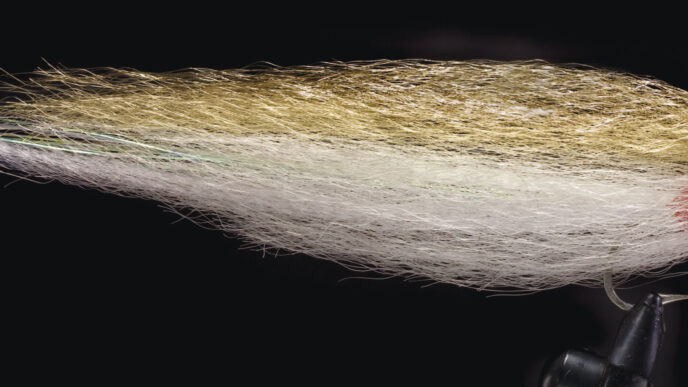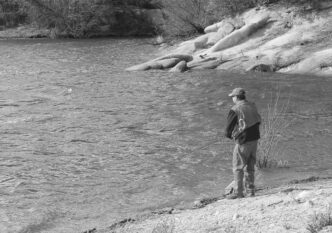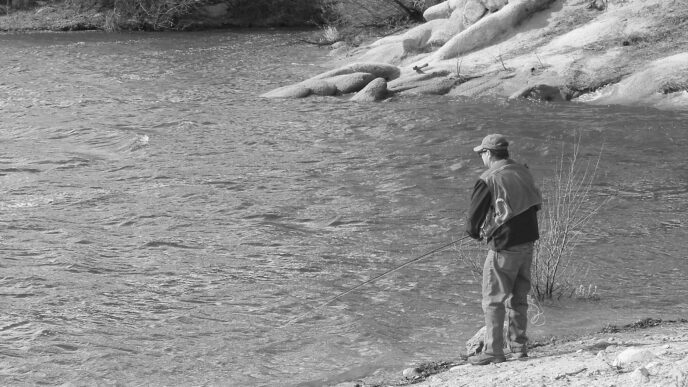Corbina season is just around the corner. Perch fishing may beat the heck out of sitting around tying flies all winter, and over the last several months, San Diego has seen some of its best fly-fishing action for barred surfperch in the last 10 years: 20, 30, even 40-plus fish in a morning or evening session, but there’s no comparison between perching and sight casting for cruising corbinas. Like hungry bonefish in search of crabs, corbinas often feed in inches of water, their backs and tails easily visible from the beach as they hunt for an easy meal.
They begin to show on our beaches around mid-May or late May and can be found throughout the summer until about mid-October.
A member of the croaker family, the corbina is California’s version of a redfish or bonefish and is similar in shape and size. Its mouth, like those of its flats-residing cousins, is located low on its head. This enables the fish to feed on sandy bottoms with greater ease. The corbina also has a barbel-shaped protrusion of cartilage on the bottom of its chin that acts as a “feeler.” As the corbina glides along in the shallow surf, this barbel is used to locate mole crabs and other crustaceans that have nestled in the sand.
If you’re familiar with surf fishing, I’m sure you’re aware of how difficult it is to catch a corbina. If you’re not familiar with fishing the surf, let me just say that corbinas are tougher to hook than the wily permit. Heck, even the bait anglers have a hard time hooking these West Coast “ghosts.” Trying to get one to eat a fly really lowers your chances of landing one, and shallow-water sight casting to corbinas is even more difficult. A fish that is feeding in extremely shallow water and that feeds predominately by smell and/or feel is going to spook easily and isn’t exactly going to charge your fly like a high-end predator.
Experience and countless hours on the water therefore are necessary to begin to learn the habits of the selective corbina. Many “corbinaholics” are my friends, and we often seek each other’s advice about surf fishing. I thought it would be helpful to share some insights from these experts on how they pursue this challenging game fish. Let me add that there are a number of dedicated corbina anglers who are not mentioned in this article, and I mean no disrespect to any of them. I’m just limited for space and time.
The one question that always seems to come up when talking about corbina fishing is “What flies do you use?” The type of fly used for corbinas actually varies quite a bit, depending on who you ask, what beaches they fish, and the types of water they’re fishing. And while flies are a hot topic throughout the surf-fishing fraternity, what flies are working best for corbinas seem to be a closely guarded secret. No one has a problem telling another angler that a size 6 chartreuse Clouser is a good “go-to” fly, but I rarely see a fellow fly fisher using one these days. So I asked my friends a few questions about how they fish for corbinas. I didn’t want to know what rods or reels they use — I wanted to know the inside information, the stuff they regularly don’t want to discuss. I wanted to know their “go-to” fly. I also wanted to know what type of fly line they use for this kind of fishing, their leader setup, and if they were willing to give up the secret, their favorite beaches for targeting corbinas. So with their permission, here are the answers I received.
Nick Curcione is one of the first fly-rod anglers to fish the California surf zone and one of the pioneers of saltwater fly fishing on the West Coast. Nick has been my mentor and inspiration for pursuing corbinas in the surf. He’s a retired college professor, the author of numerous books and articles on saltwater angling, and an avid saltwater fly tyer.
Nick: My “go-to” fly for corbinas is a revised version of my original Beach Bug that I call the Flat Belly, in size 4 or 6. I use tan or brown Steve Farrar’s Flash Blend tied in behind the hook eye, and add gray grizzly tips on either side of the fly. The fly’s unique feature is a flattened size 3/0 split shot. I file this to a diamond shape and affix it to the hook eye with an application of Clear Cure Goo (thick). The hook point always rides up, and the flattened diamond shape makes the fly plow along the bottom, kicking up sand. Side note: This is also the fly I use for bonefish in many places.
I use a sinking shooting head, primarily a Type 6. At times, when the wave action is moderate, I use a clear intermediate head in very shallow water. The leader I use is 9 feet overall: 5 feet of 40-pound, 2 feet of 20-pound, and 2 feet of 8-pound or 10-pound fluorocarbon.
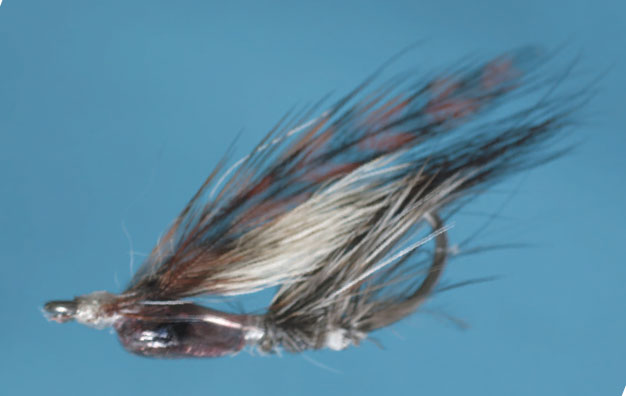
When fishing, I try to get ahead of the direction the fish is working by at least 20 feet. I make the cast and then begin stripping the fly when I think the corbina can clearly see it, usually when the fly is about 5 feet from the fish. I use short, brief strips, very similar to what I do for bonefishing.
My favorite beaches to fish are those north and south of Manhattan Beach and Hermosa Beach piers. When I’m in San Diego, I like Pacific Beach.
Gary Bulla, when he’s not leading one of his dozen or more trips to the Baja Peninsula, guides fly fishers on the beaches of Southern California. He also has designed several flies for both offshore and inshore fly fishing. You would be hard pressed to find an angler who has put more time fly fishing the salt than Gary.
Gary: My “go-to” corbina fly for sight fishing is a pea-sized mole crab imitation tied Crazy Charlie style on a size 8 hook, pink or gray and light orange. For searching troughs and holes, I use a size 6 red Gremmie. My fly line is a 200-grain integrated head and line because I want to anchor the fly some, and I use a tapered leader 10 to 12 feet long with 4 feet of 6-pound test fluorocarbon.
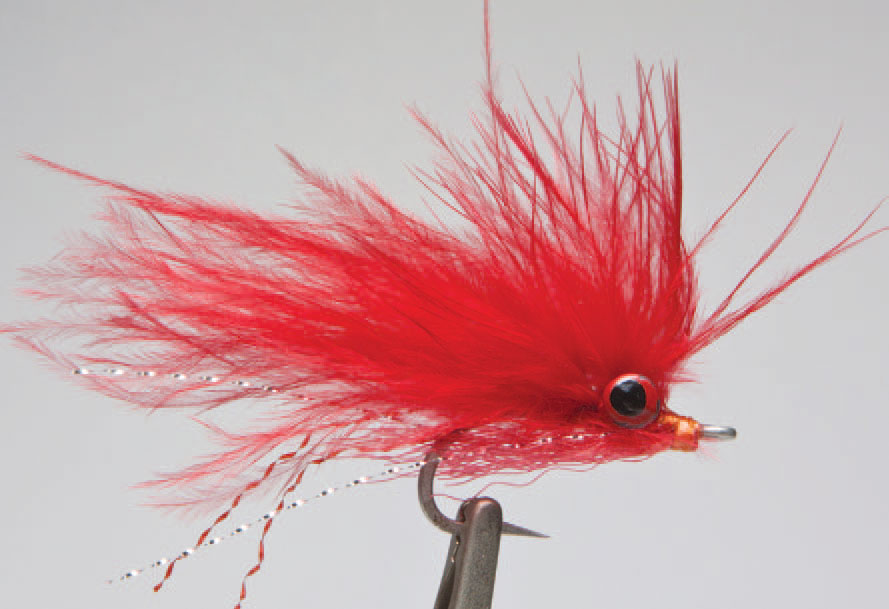
When targeting corbinas, I stay on the sand. I spot the fish and back off to cast near him. If I can’t see him except occasionally, I try to predict his path and intercept him. In my area, we are usually casting parallel to the beach, unless the water is very clear and the bottom slopes fast, as in some coves. Using a spotter is a great way to fish. My favorite California beaches are La Conchita or Santa Claus Lane. At least, that’s all I will mention!
Al Quattrocchi (Al Q) is one of the main promoters of fly fishing in the surf. He is heavily involved with the One Surf Fly Beach Classic, a friendly one-fly competition held in the spring in Southern California to promote beach fishing. Also, this year, he helped organize The Double Haul Ball, a free event to gain exposure for fly fishing the surf and to teach others about how to do it. Al has developed many new innovative fly patterns for corbinas and other surfzone fish.
Al: I have two “go-to” flies for corbinas, Paul Cronin’s Surfin’ Merkin in gray, size 4 and 6, for sight casting, and a fly I recently developed called the Ghost Whisper, size 4, for blind casting.
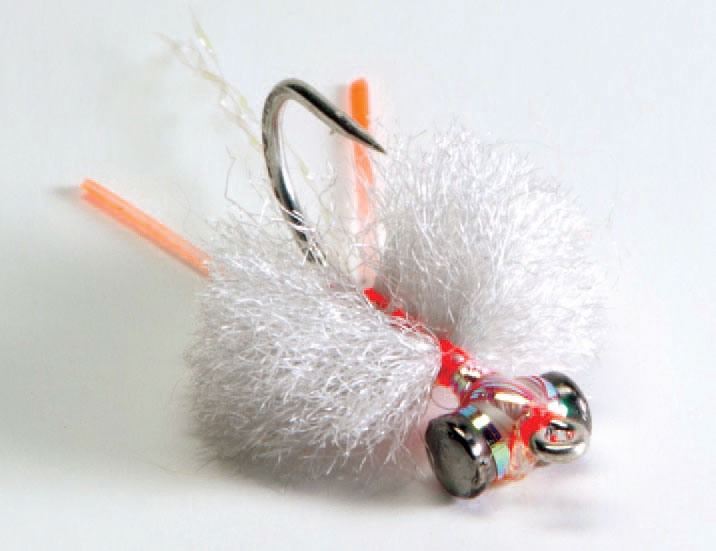
I like to use one of two fly lines, depending on the areas I fish. I use the RIO Outbound T-8 when fishing the edges of the troughs in deeper water. For skinny water and flat beaches, I like the RIO Lake Clear intermediate line. I use a 9-foot tapered leader with a fluorocarbon tippet.
When casting to these fish, the key is to keep direct contact with the fly, whether you strip long or short. A corbina can eat and spit the fly before you can detect it unless you’re moving the fly. I like sight casting to corbinas, so I prefer beaches that are fairly flat, have good crab beds, and are less sloped, so on the incoming tides, the water is around one to four feet.
Tad Van Allen fishes the beaches of San Diego more than anyone I know, including me. When the local fly shops and guides are calling his phone for a fish report, you know that he’s putting some serious hours in the surf. He has been a great sounding board for me over the last 15 years about various surf-fishing topics, and his creative flies, crazy as they look, catch lots of fish.
Tad: I call my go-to corbina fly the Viking. It is similar to a MOE (Mother of Epoxy) bonefish pattern, but tied with some purple and olive materials. I usually use a size 8. I usually fish it on a shooting head for the deeper troughs and holes, but when the “beans” are sliding up into the shallow water, I prefer an intermediate line. I use a tapered leader about 6 or 7 feet long and add about 3 or 4 feet of 6-pound fluorocarbon tippet.
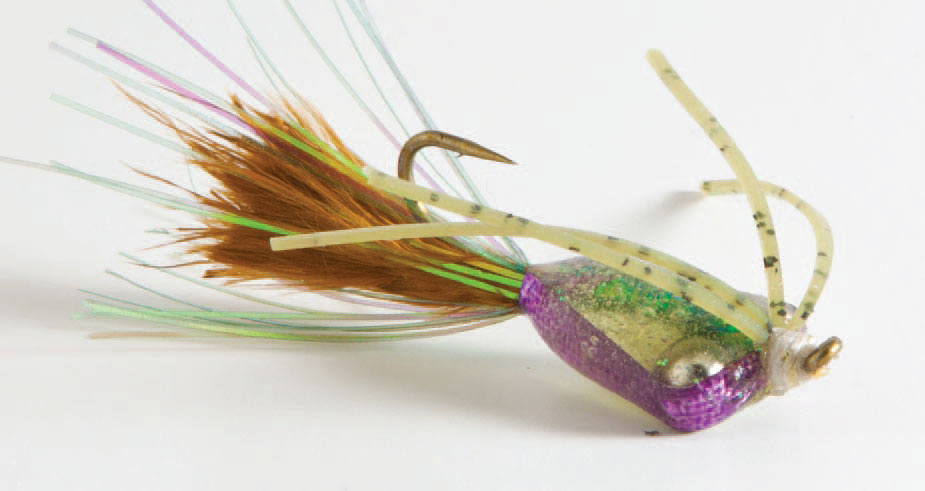
I usually try to fish the fly around the edges of the holes, casting to the outside and working the fly back through the middle. I use a slow, syncopated retrieve, which is the key to fishing this particular pattern. I prefer to fish my home water, Ocean Beach.
Scott Donaghe is a great fishing photographer, and his photos have been in many magazines and on many Web sites dedicated to fly fishing. He’s also a fly-fishing guide in San Diego and if he’s not taking someone fishing or teaching someone how to cast, he’s on a beach pounding the surf.
Scott: My “go-to” fly for corbinas is Dean Endress’s Razzler, size 6 or 8. I fish it on a RIO Striper 26-foot DC 250-grain integrated shooting head and a RIO Surf Leader with 4 or 5 feet of 6-pound fluorocarbon tippet.
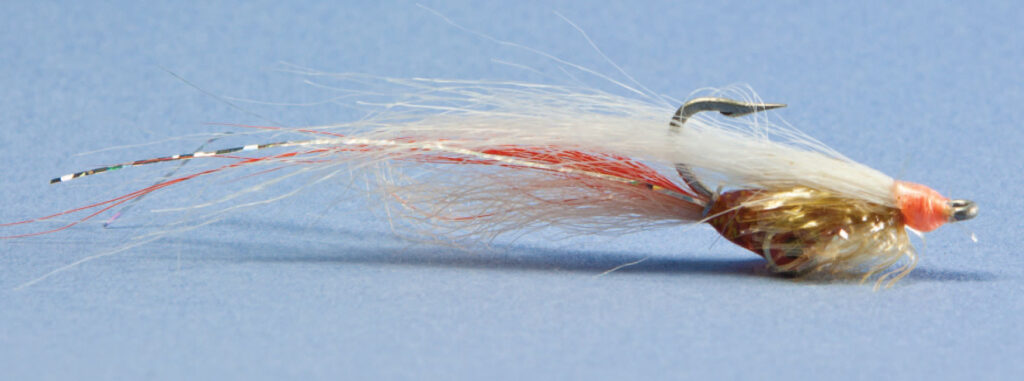
I like to cast the fly into an incoming wave to avoid spooking the fish, then pull it into the fish’s view with slow, short strips. I like to fish for corbinas on any flat, sandy beach with a good population of sand crabs. Bikini-clad passersby (preferably women) are an extra.
Todd Shetter grew up in Colorado as a trout fisherman, but moved to San Diego almost 20 years ago. After hooking his first saltwater fish on the fly, he quickly forgot about those little trout. Todd is also a surf-fishing guide in San Diego and has recently worked with Scientific Anglers to develop a new fly line specifically for West Coast surf fishing. Also an avid fly tyer, when he’s not fishing the beach, he’s designing new flies for the surf. Todd: My “go-to” fly for corbina is a Foxy Clouser, size 4 or 6. I fish it on a Coastal Express 250-grain shooting head, a new line from Scientific Anglers for surf fishing. I use a short and stout Scientific Anglers 6-foot bass leader with 3 to 4 feet of 6-pound fluorocarbon tippet.
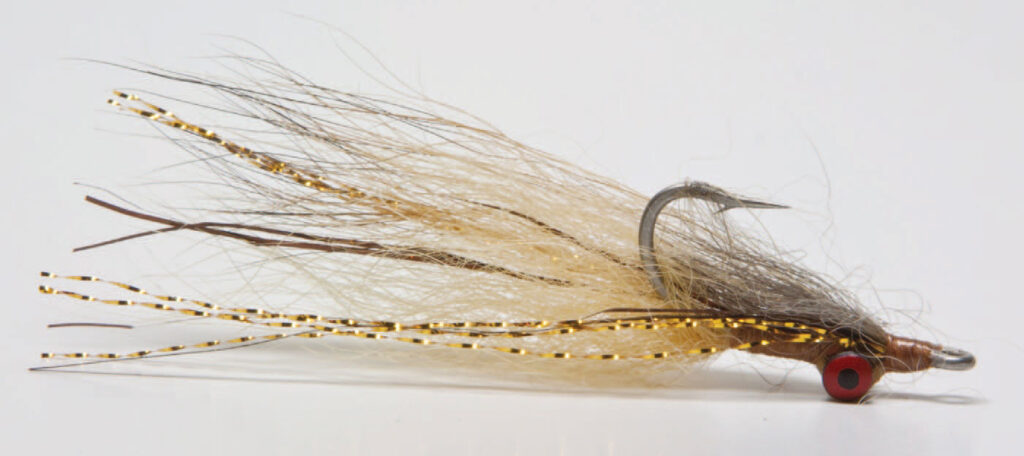
I target visible depressions in the sand, potholes, and drop-offs with irregular wave action and rips. I cast my line into the targeted water and use a two-hand retrieve with erratic, short, quick strips, followed by brief pauses and hesitations. I try to animate the fly to make it look like a struggling sand crab caught in the harsh environment. I like to fish Torrey Pines State Beach and south toward Flat Rock.
Aaron Silberberg is the manager of So Cal Fly Fishing Outfitters in San Diego. Normally, that would be a good thing. However, his 40-hour-a-week job limits his corbina addiction. That said, he still manages to fit in several hours a week of surf fishing and exploration. His enthusiasm for the game is remarkably similar to mine and my counterparts from years ago. I fish with him often, and his knowledge is priceless.
Aaron: My first choice for a “go-to” corbina fly would be a fly I designed called the Bean Burrito, size 6. My second choice would be Borski’s Bonefish Critter, size 4 or 6. I fish for corbinas with a RIO Outbound T-8 shooting head cut back to 240 grains. I occasionally use an intermediate line on very flat days. I use a tapered 7-1/2-foot 3X or 4X trout leader and add 2 feet of 6-pound or 8-pound RIO Fluoroflex tippet.
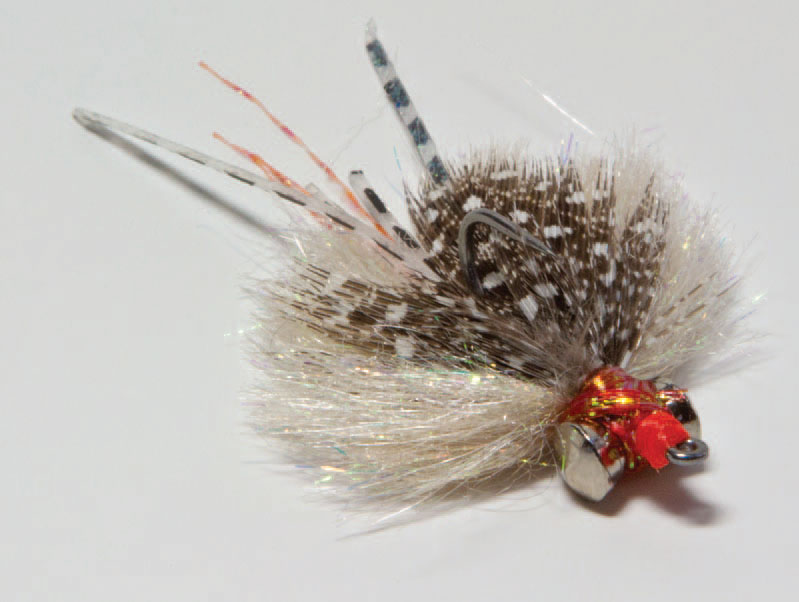
When I’m casting to a moving fish, I prefer to put my cast at least 7 to 10 feet in front of the fish and around 3 to 5 feet beyond the fish. This allows time for the fly to reach the bottom and for me to slide the fly in front of the fish. I like the fly to be still as the fish approaches. I watch the corbina’s body language, and when he’s on the fly, I twitch it to draw the strike. My line is always tight, so I can feel if the fish picks it up. I like fishing around Del Mar and to the north.
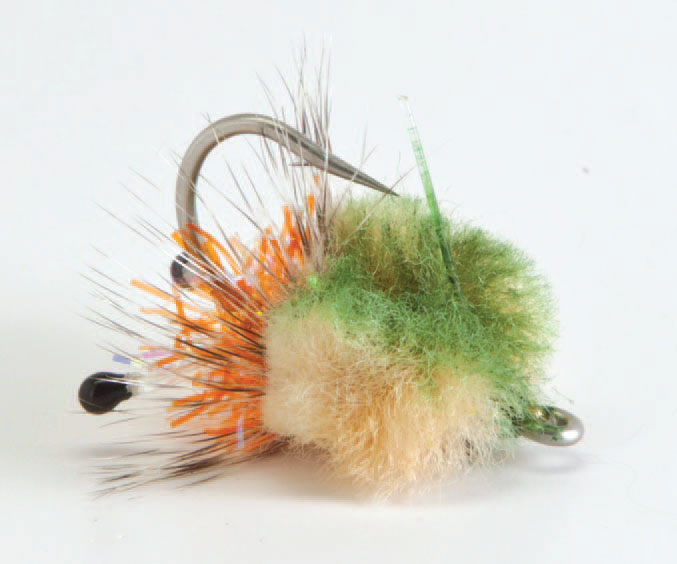
Bill Calhoun is a saltwater fly-fishing guide in Orange County, where he spends countless days on the water putting his clients onto fish. A former manager at Bob Marriott’s Flyfishing Store, Bill has developed a loyal following of customers who seek his experience fishing for bluewater species and on the beach for corbinas. Bill also has developed several saltwater fly patterns for inshore and offshore fishing, along with flies that are specific for Southern California’s beaches.
Bill: My “go-to” fly for corbinas is the Calhoun Swimming Sand Crab. Over the years, I’ve studied the different ways that corbinas are attracted to sand crabs via sight and feel, and I not only have integrated them into this fly, but also have magnified each trigger point — size, color, action, and vibration.
I like to use a 5-weight or 6-weight rod and a clear intermediate line. Anything heavier spooks the fish when casting into their area of awareness. I also use an 8-foot straight 6-pound-test fluorocarbon leader. I attach my fly with a Loop Knot, which enables the weighted fly to dive toward the bottom like a sand crab after it has been swept upward in a crashing wave.
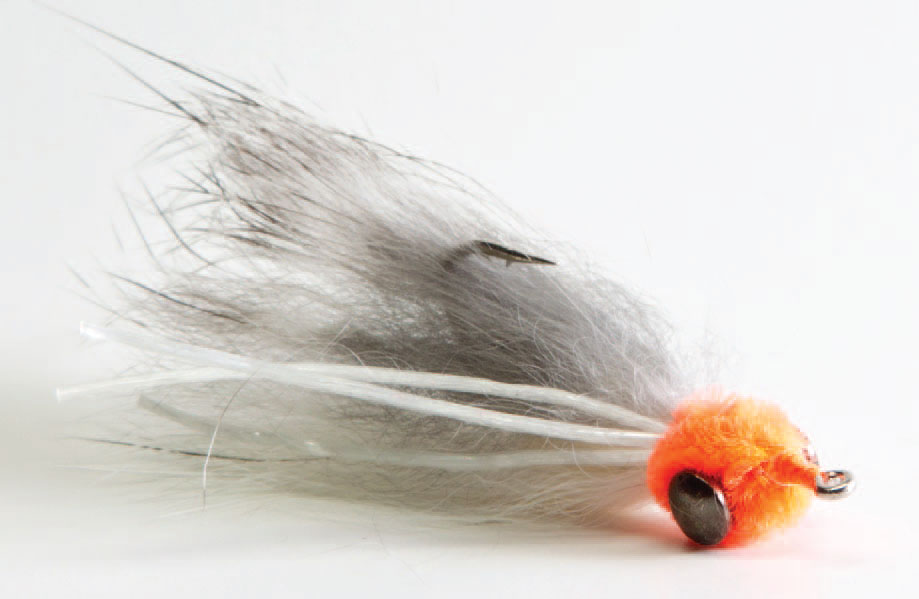
When I spot a corbina, if I can, I wait for the next shallow wave to approach and cast into the suds while it’s a few feet away from the fish. The wave prevents the leader and line from being detected. I cast no closer than three or four feet in front of the fish and begin short, four-inch strips. If I lose sight of the corbina, I always cast a few more times in that same area and fish blind.
Ken Hanley is a true pioneer of the West Coast surf-fishing scene and another huge inspiration, not only to me, but to hundreds of other surf-zone addicts. He’s a member of the Northern California Council of the Federation of Fly Fishers Fly Fishing Hall of Fame and author of countless fishing articles and several books, including Fly Fishing Afoot in the Surf Zone and Fly Fishing the Pacific Inshore.
Ken: My “go-to” corbina fly is Terry Baird’s Shimmering Crab. I fish it on a weight-forward sink-tip line on a 9-foot tapered leader with a fluorocarbon tippet. With Terry’s fly, I work the first trough with the first cast “upstream” from where a corbina was stationed, letting the fly get down, then pulling the crab in a downward flight path. If done correctly, the fish will see the fly as a crab diving toward cover and slide up to inhale it. I also have presented the fly with a short-line high-stick-nymphing approach, just like working pockets and lanes in a stream.
What’s It All Mean?
No two anglers are ever going to fish exactly the same way, but there are some areas of agreement and disagreement in these responses. Both should help you gain a better understanding of how to fish a fly successfully for this frustrating species.
First of all, while the type of fly varies quite a bit, even with guys who fish the same areas, almost all the flies mentioned for this piece are weighted, which is important because weight gets the fly down on the sand and into the strike zone. The colors of the flies are mostly shades of brown or gray with hints of orange. This makes sense, because the corbina’s main food source is the mole crab or sand crab, which is mostly gray and tan, and preferably females, which have an orange egg sack on their undersides when spawning. As far as size of the flies, most went with size 6 or 8.
Leaders were all relatively the same: 8-to-10-foot-long fluorocarbon tapered down to 6-pound or 8-pound test. Fluorocarbon is less visible in the water than standard monofilament and much more abrasion resistant, which is a huge benefit in the surf’s harsh environment.
When it comes to fly lines, one thing is for sure: Even though fly fishers target corbinas in inches of water, not one of our experts uses a floating line. Floating lines do not work as well as sinking lines when angling off the beach. There are many different currents in the surf zone, subtle though they might be in extremely shallow water, and they push and pull, causing drag on the fly line. Drag on the line causes the angler to lose control of the fly and interferes with the ability to manipulate it properly. Our panel of experts were all very concerned with maintaining contract and control, using phrases such as “direct contact,” “tight line,” “slow the fly down, and “slide the fly in front of the fish.” It’s obvious that these anglers believe it’s crucial to be in control of the line all the time, and sinking lines allow for that.
However, they disagreed about what type of sinking line to chose. Some preferred intermediate lines, while others liked sinking shooting heads. The number-one concern for the guys who were fishing clear intermediate fly lines was spooking fish with their casts. The guys who fished sinking heads weren’t concerned about spooking fish, but about keeping their fly anchored in the spot they wanted it to be, and they felt that the shooting head helps them do that better than an intermediate line.
There are basically three ways to fish for corbinas off the beach. One is to blind cast repeatedly into holes and troughs in the surf until you hook a fish. If you use this approach, early mornings and late evenings produce good results. Or you can sight fish when the sun is higher in the sky, ideally from around 9:00 A.M. until 4:00 or 5:00 P.M., seeking out fish in holes, troughs, and drop-offs. This approach also allows you to do some blind casting, as well, if you choose. Finally, you can sight fish on the “flats” — beaches that are more flat than sloped — where corbinas move in to feed on sand crabs in inches of water. This is the most frustrating, yet also the most rewarding of the three approaches. If you haven’t pursued corbinas in the surf, you now have some sound advice about how to get out and try. If you have fished for corbinas and haven’t snapped your rod over your knee yet, these suggestions may motivate you for the upcoming season. Good luck. You’ll need it!



